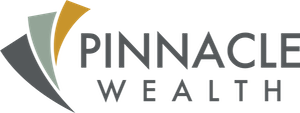Kevin Engbers, CFP®, Founder and Wealth Advisor
The passage of time is something to be cherished, but 2020 is a year most people don’t mind closing the book on. Recently, I heard someone say, “2021 can’t be as bad, right?”
That’s a matter of wait-and-see, but one thing we know for sure: Come tax time, the government will be looking for their check. As they say, death and taxes are the only two certainties, and the only difference between those is that death doesn’t get worse when congress is in session.
Keep in mind that what you do from January 1 to April 15 is tax preparation, but what you do from January 1 to December 31 should be tax planning. Although we make financial plans to work on their own and be left alone for much of the time, there are some aspects of tax planning that need regular review.
Here is a condensed year-end tax checklist to check and double-check for tax efficiency. Use this year-end tax checklist to help you plan for these next few months and get you started on the right track for next year.
CHECK IT
- Itemized vs. Standard Deduction Planning – As part of the Tax Cuts and Jobs Act, the standard deduction nearly doubled, so most Americans will not be getting a tax benefit from itemized deductions. But if you had significant changes from last year like you bought a new home, had a lot of medical bills, or gave a lot to charity, it’s possible you could benefit from itemized deductions this year.
- Adjust or Max Out 401(k) Contributions – Are you taking full advantage of your employer match? Do you want to contribute more to lower your taxable income or contribute to a Roth while you’re in a lower tax bracket? Now’s the time to get it done.
- Plan for Expected Income Next Year – There is an easy step if you’re a salaried employee without much variation. However, for executives with bonus structures, business owners, or salespeople tied to commissions, you’ll want to think through what your expected take-home pay will be.
- Re-enroll in Employer Benefits – Enrollment periods for health and other employer benefits are usually in the last quarter. Make sure you and your family have signed up for the correct plan, especially considering any major medical expenses you anticipate.
- Tax-Loss Harvesting – The IRS allows you to offset capital gains with capital losses you realize in a year. Additionally, you can offset up to $3,000 in ordinary income through capital losses per year. Do you have any losing stocks from this year you could get rid of?
- Roth Conversion – Have you done a Roth IRA conversion this year? With the new tax law reducing tax rates for many Americans, it might be a good time to convert some money from an IRA to a ROTH IRA. But to include that conversion in 2020 income, you need to do it by the end of the year.
- Required Minimum Distributions (RMDs) – All RMDs, even on inherited accounts, have been suspended in 2020 due to the pandemic and economic shutdown. You are “in the clear” on these for the rest of the year, but they will start up again in January 2021. If you have an inherited retirement account in 2020, the SECURE Act has eliminated the stretch IRA strategy and you are required to deplete the account in ten Talk with your advisor about your specific situation as there are still situations where the stretch exists depending on when you inherited the retirement plan.
- Charitable Planning – If you want to give money to a charity and receive a tax deduction for 2020, you need to make this gift by the end of the year. But remember: This only applies if you itemize your deductions, not if you take the standard deductions.
- 529 Planning – While contributing to a 529 plan will not give you a federal income tax deduction, you could get a state income tax deduction depending on your state’s rules. So if you are saving for your child’s education, check with your advisor or tax professional to see if you’re eligible for a deduction.
- Pay Off or Refinance Home Equity Indebtedness – Home equity indebtedness – any mortgage interest on the debt principal that you borrowed that was not used to acquire or substantially improve a home – is no longer deductible after 2017. Instead, consider paying down the debt or refinancing, especially if you carry a high interest.
DOUBLE CHECK
- Estate Plan – Does your estate plan reflect any new assets, like a car or property? The end of the year is a good time to evaluate your trusts, wills and other legal documents.
- Beneficiaries – Have you had any children or grandchildren in the last year? Look at updating your beneficiaries with any changes to your family, as well as any charitable foundations you want to designate.
- Insurance Review – As your assets or expenses grow, so too can your insurance needs. It is a great time to schedule a policy review.
- Emergency Fund – Your emergency fund should be at least three months of expenses. If your expenses increased last year, now is the time to think about adding to your savings.
- Asset Allocation – The end of the year is a good time to reassess your investment allocation and your risk tolerance.
- Set Up a Retirement Account. If you are self-employed or a small business owner, you might want to consider setting up a 401(k), defined benefit plan, IRA, SIMPLE IRA or SEP IRA.
- Flexible Spending Accounts – A flexible spending account (FSA) is a tax-deductible account that can be used for a specific expense, like medical or child care.
THINK AHEAD
- New Years Goals – The end of the year is a good time to do some This can be broader than just your financial planning goals. Think about savings, investing, retirement planning, and career goals and investing back in yourself.
- Prepare for Tax Season – Many of your employer documents, investment forms and other important tax documents won’t be mailed until January or February, but you can start getting receipts, bills, accounts and other documents in order.
- Speak with an Advisor –The end of the year is a great time to review your current situation and speak with a financial advisor. An advisor can help you pursue your goals, look for any gaps in your plan and make sure your investments are in line with your risk tolerance.
Live life by design not default – you define it, we’ll design it. This is our vision here at Pinnacle. We want to help you make your financial dreams into concrete plans, and your year-end tax planning checklist is a good place to start. Get in touch today for a complimentary initial appointment, or your year-end check-in, and let’s get your plan in place!
This information is not intended to provide specific legal, tax or other professional advice. For a comprehensive review of your personal situation, always consult with a tax or legal advisor.
Converting from a traditional IRA to a Roth IRA is a taxable event. A Roth IRA offers tax free withdrawals on taxable contributions. To qualify for the tax-free and penalty-free withdrawal or earnings, a Roth IRA must be in place for at least five tax years, and the distribution must take place after age 59 . or due to death, disability, or a first time home purchase (up to a $10,000 lifetime maximum). Depending on state law, Roth IRA distributions may be subject to state taxes


